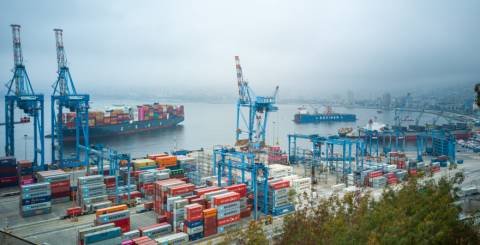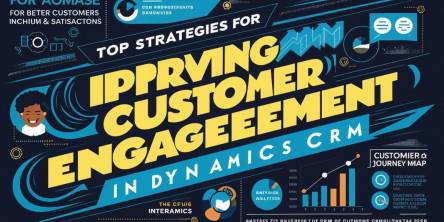Top Strategies for Risk Mitigation in Supply Chain

In today's global marketplace, supply chains have become increasingly complex, with businesses relying on suppliers worldwide to deliver products and services to their customers. While this has opened new growth opportunities, it has created unknown risks and challenges. Disruptions in the supply chain can significantly impact a business's operations, reputation, and bottom line. Risk mitigation is an essential aspect of supply chain management that helps to reduce the negative impact of unforeseen events or disruptions that can affect the flow of goods and services. Today's globalized and interconnected world is making supply chains more complex while making it crucial to identify and address potential risks proactively.
Effective risk mitigation strategies can help companies to maintain a competitive edge by minimizing the impact of supply chain disruptions. One of the key ways to mitigate supply chain risk is to diversify suppliers and geographies. Relying on a single supplier or region can be risky, as any disruption in that area can impact the entire supply chain. By working with multiple suppliers and diversifying geographies, companies can reduce their dependence on any single source and minimize the risk of disruption.
Explore the top supply chain risk mitigation strategies for 2023, including building resiliency, diversifying suppliers, leveraging technology, and implementing contingency plans. By adopting these strategies, businesses can better protect themselves from supply chain disruptions and ensure continued success.
Here are some Supply Chain Risk Management Strategies that will come in handy for Companies in 2023:
- Analyze Risk Exposure: The first step towards risk mitigation in supply chain management is to analyze the company's risks. It involves identifying potential risks such as supplier bankruptcy, natural disasters, geopolitical risks, and cyber threats. Companies can use a risk matrix to assess the probability and impact of these risks on their supply chain operations.
- Evaluate and Prioritize Potential Risks: Once the risks have been identified, the next step is to evaluate and prioritize them based on their potential impact on the supply chain. Companies need to consider factors such as the likelihood of the risk occurring, the severity of its impact, and the level of control they have over it. By prioritizing risks, companies can focus their risk mitigation efforts on the most critical areas.
- Set up a Diversified Collection of Suppliers: One of the most effective ways to mitigate supply chain risk is to set up a diversified collection of suppliers. Relying on a single supplier can be risky, as any disruption in that area can impact the entire supply chain. By working with multiple suppliers, companies can reduce their dependence on any single source and minimize the risk of disruption.
- Periodic Risk Review: Periodic risk reviews are crucial for effective risk mitigation in supply chain management. It involves regular inspections of the company's supply chain operations to identify potential risks and evaluate the effectiveness of existing risk mitigation strategies. Companies can stay current with threats by conducting periodic risk reviews and adjusting their risk mitigation strategies accordingly.
- Establish Effective Communication and Collaboration: Effective communication and collaboration with suppliers is another essential strategy for risk mitigation in supply chain management. It involves building strong relationships with suppliers, sharing information about potential risks, and working together to mitigate them before they become significant issues. By establishing effective communication and collaboration with suppliers, companies can identify potential risks early and work together to find solutions.
Global supply chain risk management strategies are crucial for businesses looking to mitigate the impact of unforeseen disruptions. By analyzing risks, prioritizing them, diversifying suppliers, conducting periodic reviews, fostering collaboration, and using technology, companies can safeguard their supply chains and maintain business continuity.
Similar Articles
The retail sector has been subject to continuous advancement thanks to the changing needs and demands of consumers. And it is also a well-known fact that shopping experiences have and must mirror technological and societal advancements. Today, customer expectations are unequaled, demanding consistent and customized experiences across different platforms.
Virtual Hard Disk (VHD) files play a role as they store all the data for a virtual machine. If these files get damaged or mistakenly deleted it can have repercussions, impacting not data integrity but also operational continuity.
Corporate transparency is essential in building stakeholder trust and credibility in today's evolving business environment. As businesses grow and adapt to changing regulations, ensuring adherence to rules and maintaining records has become increasingly intricate.
Among the solutions developed over the past few decades, Salesforce Financial Services Cloud (FSC) has emerged as the definitive choice for gaining flexibility, visibility, and long-lasting, inclusive growth in the financial sector.
Open source software (OSS) is distributed with its source code, which means it can be distributed, modified, and used freely with the original rights. Most users never see the source code, a critical part of the software.
It's one of the keystones, basic but key in the successful highly competitive modern business environment, where the connection with the customer is a must.
The speed of progress in the modern business landscape is quite relentless. For small-scale companies, this implies that keeping up with this progress is not simply gainful but fundamentally significant for their survival. And what does success in such an environment demand?
The finance sector needs to battle many difficulties in the modern and quick-moving digital landscape. Be it exploring the unpredictable snare of official guidelines or overseeing tremendous volumes of data - - financial establishments are feeling the pressure to succeed. This demanding environment, in turn, often leads to exhausted teams, costly manual errors, and inefficiencies that can be chalked up to repetitive tasks
The manufacturing industry, vital to the world economy, is at a pivotal intersection. I mean that, yet again, changes are afoot in the sector, this time driven by digital transformation as it represents a profound change in the very essence of how manufacturers operate, think, and drive innovation.









